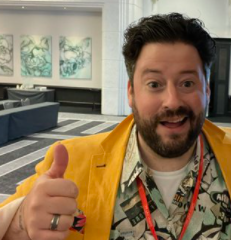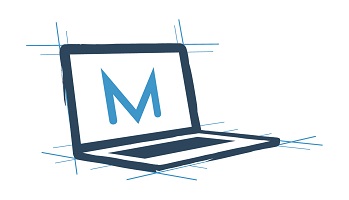It’s not you, it’s me: Examining our role in transforming Endpoint Management
This is the first post in a series on Modern Workplace management. Through this series I will explore the underlying questions of endpoint management and what it means for us as IT Pros.
It’s not you, it’s me.
I get it – you want this amazing modern workplace experience, but I’m not sure you know what you’re ACTUALLY asking for. I mean, look at our environment. It’s complex because it needs to be. The old IT manager wrote a login script, and I’ve spent a lot of time adding to it and maintaining it – and, well, to be honest … I’m not quite sure what all of it does. I just don’t want to break anything by taking it out. And our group policies? I mean, I know what the stuff I created does. I’m just not sure about everything else … and besides, do we really want to mess with our Default Domain policy? I don’t think we can tolerate that kind of risk – and have you met OUR end users? OUR users are the worst! Way worse than anywhere else I have been! I could insert any number of clichés here. (The world is changing, the future is now, or any statement involving the word synergy.) We all know that business and technology are changing at an unrelenting pace. Our organizations are demanding that we provide solutions that allow them to be more mobile, more collaborative, and more flexible. We, as IT Pros, have turned around and asked our vendors for better solutions. They have, in turn, provided those solutions. Under Satya Nadella, Microsoft has shifted from a monolithic company that tried to force a one-size-fits-all set of solutions to a company that builds platforms that fit our needs. They stopped telling us how to work and started listening to what solutions we needed to benefit our organizations. Microsoft has not only led the Modern Workplace shift by providing better, more flexible collaboration and management tools, but they have helped to drive cultural change that our companies want to emulate.
I could spend a lot of time rehashing what Brad Anderson said in his post titled, “Modern management and security principles driving our Microsoft Endpoint Manager vision.” He does an excellent job summarizing what makes a “modern workplace” and the technical solutions driving the evolution of modern endpoint management. We know that our users have changed, our organizations want to be more agile, and we need to be able to make data driven technology decisions. There’s a wealth of information available to us, so why do we have trouble getting there? On a recent episode of the Modern Workplace Podcast, Jared Spataro, Corporate Vice President of Microsoft 365, summarized it well:
“The future is already here, it’s just unevenly distributed.”
Microsoft has provided tools that empower us to deliver a modern workplace to our end users. Some companies have been able to adopt the principles of modern management, but most of us are having trouble developing the roadmaps to deploy these solutions. We can adopt solutions, but we have failed to adapt to them. We hold on to our legacy tools because we are afraid of the impact of removing them. It’s too easy to stick with the status quo.
We make a lot of excuses about why we can’t implement new solutions. Our belief is that our environments are necessarily complex – that our legacy logon scripts, highly managed group policies, and agent-filled operating systems are the only way to meet the unique needs of our businesses. There is a disconnect between end users and IT. Technical teams are notoriously slow in responding to user requests. Our answers are often condescending. Shadow IT is a monster that we created by not being partners to our businesses. Put more simply – we are our own worst enemies.
The future is unevenly distributed because we have been slow to accept it. We like the technology but don’t like what it means. Modern Workplace is a concept – it’s about culture, not policy. Solutions are more agile. Unnecessary complexity has been eliminated. Development and deployment cycles have shortened. Now we need to adjust to these changes.
It’s one thing to say we are using modern solutions, but are we ready to adopt the concepts and drive organizational and cultural change? Tools like Microsoft 365 empower us to bring change to our organizations. The Modern Endpoint Manager console and admin center give us the tools to be proactive. Partnering with our end users will lead to us becoming trusted advisors and drivers of change. We are well-positioned to become leaders and visionaries, but we must be willing to accept change and move with technology.
As Neo learned in The Matrix, “Do not try and bend the spoon. That’s impossible. Instead, only realize the truth … THERE IS NO SPOON. Then you will see that it not the spoon that bends. It is yourself.” We have convinced ourselves that there is no alternative to the massive legacy solutions currently in place. Our organizations are looking for technical leadership to build modern solutions. It is up to us to accept the opportunity ahead of us, accept new solutions, and become agents of organizational change. Jared summed it up well in the Podcast: we need to transform in our cultures, “from know-it-alls into learn-it-alls.”
In future blog posts I will unpack many of the concepts that are driving modern workplace and endpoint management. I will take an object-oriented approach to examine how things have changed and what we can do to respond to those changes.
First, we need to acknowledge the most important piece in transforming endpoint management.
It’s not you; it’s also not me.
It’s us.

